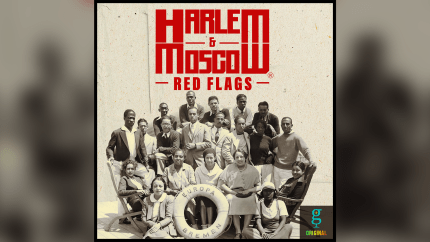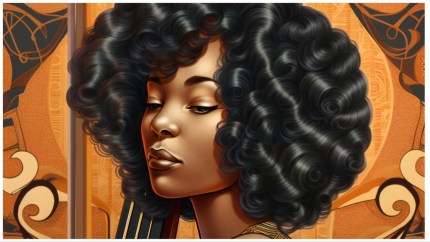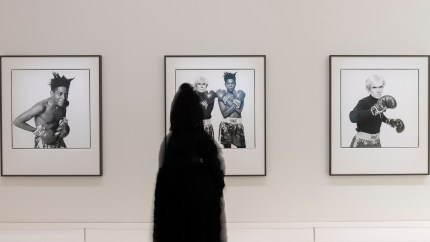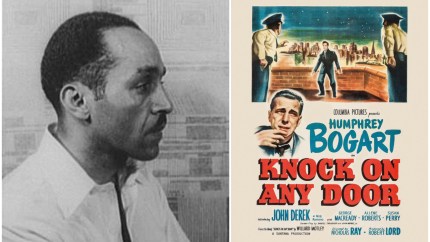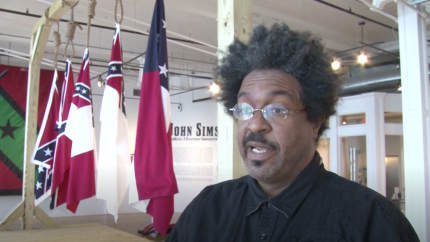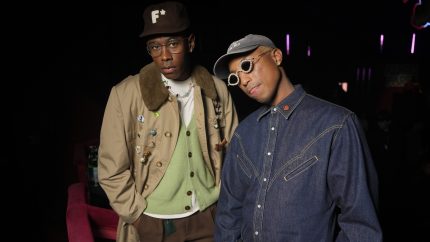The Met’s ‘The Harlem Renaissance and Transatlantic Modernism’ honors America’s Black mecca
Pop culture critic Miles Marshall Lewis explores the throughline from the Harlem Renaissance to hip-hop in The Met's new exhibition.
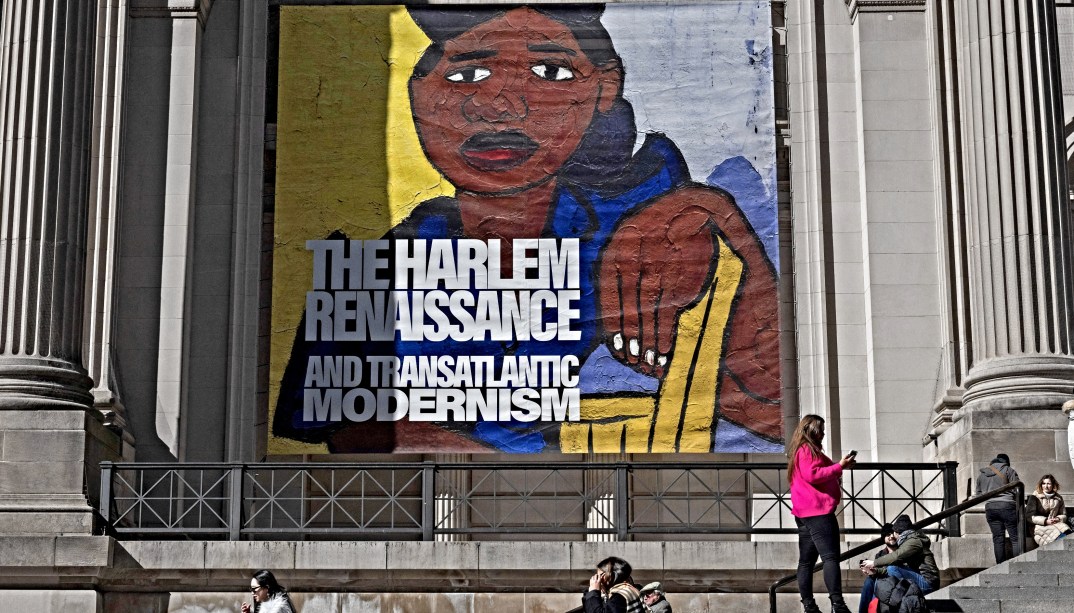
A stone’s throw from Harlem, on the stately campus of Columbia Journalism School, a two-day conference took place recently celebrating the legacy of hip-hop journalism. With panel discussions, recorded oral histories from former rap magazine editors, and stately portraits shot by Rog and Bee Walker, nuanced writing devoted to hip-hop culture finally got its flowers as a modern-day literary movement of sorts. When the time came for my own interview, I recalled being directly inspired by both the Black Arts Movement and the Harlem Renaissance, hoping the future would look back on us having continued the tradition of documenting the Black creative expressions of our own time.
Those thoughts came up again walking by the 160 paintings, sculptures and collectibles on view at the Metropolitan Museum of Art’s latest exhibit, “The Harlem Renaissance and Transatlantic Modernism.” Seeing magazines like Fire!! (published in 1926 by literary luminaries like Zora Neale Hurston, Countee Cullen and Langston Hughes) and The Crisis in glass display cases made me feel like part of a cultural continuum. Running until late July, the exhibition intends to “explore the comprehensive and far-reaching ways in which Black artists portrayed everyday modern life in…Harlem and nationwide in the early decades of the Great Migration.” Toward that end, Met curators did the thing — it’s a resounding success.
As historical tomes like Sharifa Rhodes-Pitts’s excellent “Harlem Is Nowhere” have explained, New York City landlords originally meant the north Manhattan neighborhood of Harlem as a location for upper-class white residents in the late 19th century. Overdevelopment resulted in their desperation to fill empty buildings as best they could — with Black folks, leading to white flight. By the 1920s, Harlem had swiftly turned into a major Black mecca of the United States, attracting more than its fair share of painters, writers, poets, musicians and intellects in one concentrated ‘hood.
Divided into sections like “The Thinkers” (said thinkers including W.E.B. DuBois, Alain Locke and Aaron Douglas), “Nightlife,” “The New Negro Artist Abroad” (featuring film clips of Josephine Baker dancing the Charleston) and “Luminaries” (spotlighting collaborations across the pan-African diaspora), the Met exhibit covers a wide expanse of those Harlem Renaissance years — which last roughly from 1918 to 1937.

Many of the exhibition’s vividly painted portraits command immediate attention. Painter Laura Wheeler Waring’s oil canvas of opera singer Marian Anderson in a floor-length red dress astounds as much in 2024 as it originally did in 1944. (Waring’s “Girl in a Green Cap” is also pretty breathtaking.) Charles Henry Alston’s “Girl in a Red Dress” captures its short-haired Black female subject by mixing a modernist flatness with African aesthetics — the museum label references Fang reliquary busts — to create a thing of beauty. The bold, thickly applied blues, yellows and browns of artist William H. Johnson’s oil-on-burlap “Woman in Blue” come through as striking as a 4K animated movie.
Recommended Stories
Original first editions of Zora Neale Hurston’s “Their Eyes Were Watching God” (attributed to “Zora N. Hurston” on its cover) and Alain Locke’s “The New Negro” anthology open the exhibit alongside arresting portraits of Locke and poet Langston Hughes (both by painter Winold Reiss). By the time you reach the end of “The Harlem Renaissance and Transatlantic Modernism” — which concludes with Romare Bearden’s wall-spanning collage piece, “The Block” — all your smartphone photos of that era-defining art may not suffice; expect brisk sales of the Met’s $65 keepsake exhibition catalog.
Once upon a time, in late 1969, the Metropolitan Museum of Art staged an exhibition — “Harlem on My Mind: Cultural Capital of Black America, 1900-1968” — that notoriously failed to include any Black contemporary artists of the period, leading to protests from the very community it purported to celebrate. Its corrective should not have taken 55 years, but it’s here, and it’s grand.
Time will tell if, come the 2070s, the Met celebrates the centennial anniversary of hip-hop and its broad-ranging artistic contributions — no doubt including photographer Barron Claiborne’s kingly portrait of Biggie Smalls and original editions of XXL, The Source and Vibe, etc. — with the same vivacity. For now, “The Harlem Renaissance and Transatlantic Modernism” celebrates the foundation of an early Black arts movement with all the verve it deserves.
To further explore the impact of the Harlem Renaissance, tune into theGrio’s upcoming podcast “Harlem and Moscow.” Based on the true story of one of America’s best-kept literary secrets, the audio drama reimagines the moment a group of Harlem Renaissance artists and activists traveled to Moscow in 1932. “Harlem and Moscow” and its companion podcast, “Harlem and Moscow Red Flags,” will be available on theGrio Black Podcast Network or wherever you get podcasts on March 28.
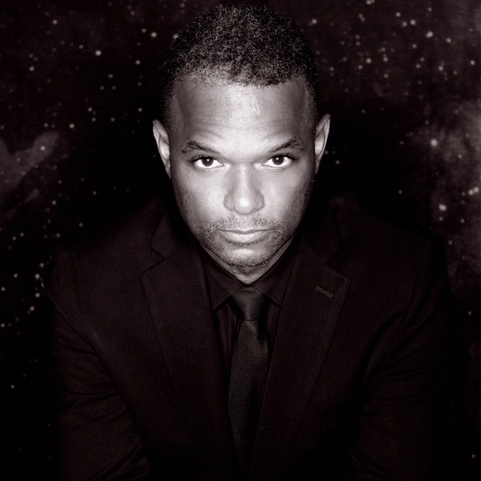
Miles Marshall Lewis (@MMLunlimited) is an author and Harlem-based cultural critic whose work has appeared in The New York Times Magazine, GQ, Rolling Stone and many other outlets. Lewis is currently finishing a cultural biography of comedian Dave Chappelle, his follow-up to Promise That You Will Sing About Me: The Power and Poetry of Kendrick Lamar.
Never miss a beat: Get our daily stories straight to your inbox with theGrio’s newsletter.
